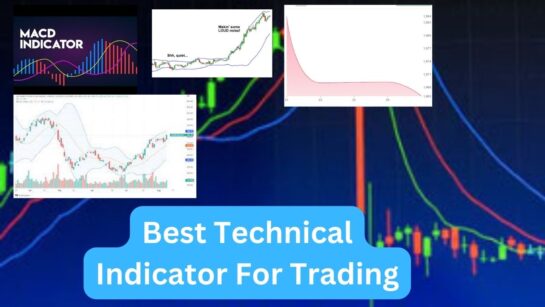 In the dynamic world of financial markets, traders constantly seek tools that can help them make informed decisions amidst volatility. Among the plethora of strategies and methodologies, technical analysis stands out as a popular approach. Technical indicators, in particular, play a crucial role in helping traders identify trends, gauge market sentiment, and time their trades effectively. Here, we delve into the ten best technical indicators that traders rely on for success.
In the dynamic world of financial markets, traders constantly seek tools that can help them make informed decisions amidst volatility. Among the plethora of strategies and methodologies, technical analysis stands out as a popular approach. Technical indicators, in particular, play a crucial role in helping traders identify trends, gauge market sentiment, and time their trades effectively. Here, we delve into the ten best technical indicators that traders rely on for success.
1. Moving Averages (MA): Moving averages smooth out price data to identify trends over a specified period. The most common types are Simple Moving Average (SMA) and Exponential Moving Average (EMA). MAs help traders identify trend direction and potential reversal points.
2. Relative Strength Index (RSI): RSI measures the speed and change of price movements, indicating overbought or oversold conditions. Traders use RSI to confirm trends and identify potential trend reversals.
3. Moving Average Convergence Divergence (MACD): MACD combines two MAs to signal changes in momentum. It consists of the MACD line, signal line, and histogram, providing insights into trend strength and potential crossovers.
4. Bollinger Bands: Bollinger Bands consist of a moving average and two standard deviations plotted above and below it. They help traders identify volatility and potential price reversals when the bands contract or expand.
5. Stochastic Oscillator: The Stochastic Oscillator compares a security’s closing price to its price range over a specified period. It helps traders identify overbought or oversold conditions and potential trend reversals.
6. Fibonacci Retracement: Based on the Fibonacci sequence, this tool identifies potential support and resistance levels. Traders use Fibonacci retracement levels to anticipate price corrections within a trend.
7. Average True Range (ATR): ATR measures market volatility by analyzing price ranges over a specified period. Traders use ATR to set stop-loss levels and determine position size according to market conditions.
8. Ichimoku Cloud: This complex indicator provides insights into trend direction, momentum, and support/resistance levels. It consists of five lines, with the cloud (Kumo) representing future support and resistance zones.
9Volume reflects the number of shares or contracts traded in a security. Traders use volume to confirm price trends and identify potential reversals. High volume often accompanies strong price moves.
10. Parabolic SAR (Stop and Reverse): Parabolic SAR helps traders identify potential trend reversals. It places dots above or below the price, signaling when the trend direction may change.
While these indicators offer valuable insights, it’s essential to understand that no single indicator guarantees success. Traders often combine multiple indicators to confirm signals and increase their probability of making profitable trades. Moreover, they should adapt their strategies to changing market conditions and employ risk management techniques to protect their capital.
In conclusion, mastering these ten technical indicators can significantly enhance a trader’s ability to analyze markets and make informed decisions. Whether you’re a novice or seasoned trader, integrating these tools into your trading arsenal can be the key to unlocking success in the financial markets.

